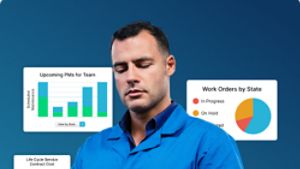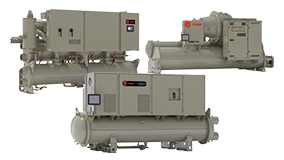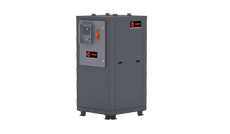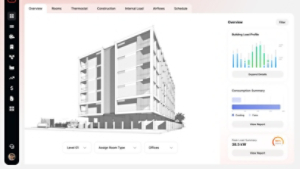President Biden’s administration has issued a variety of Executive Orders to address climate change. Through its Federal Sustainability Plan, the administration has “set a range of ambitious goals to deliver an emissions reduction pathway” to reduce U.S. greenhouse gas emissions by 50-52% by 2030. To successfully track progress on this goal, a standardized method of measurement is needed.
In October 2021, the General Services Administration (GSA) requested information on how to include the social cost of carbon into the Federal Acquisition Rule (FAR), which could require federal agencies to consider carbon emissions as part of their vendor evaluation and procurement process. Nearly 35,000 comments were submitted.
Trane Technologies, a global climate innovator, submitted comments supporting the effort because it has been considering the impacts of product-related carbon emissions on its customers for some time. In fact, since 2020 Trane -- by Trane Technologies -- has pursued the reduction of customer GHG emissions by one billion metric tons by 2030. Let’s review what this could mean for federal government contracts.
What is the social cost of carbon?
The U.S. EPA published a factsheet that cites the social cost of carbon (SC-CO2) as “a comprehensive estimate of climate change damages and includes, among other things, changes in net agricultural productivity, human health, property damages from increased flood risk and changes in energy system costs, such as reduced costs for heating and increased costs for air conditioning.”
Anticipated impacts of adding SC-CO2 into the Federal Acquisition Rule (FAR)
The published Request for Information seeks the following through potential regulation:
- “Usable and respected methodologies for measuring GHG emissions over the lifecycle of products procured or leased, as well as services performed”
- A “method for federal agency procurement officials to better incorporate and mitigate climate-related financial risk”
- A means for “federal government agencies to give preference to vendors who can successfully reduce greenhouse gas emissions”
- “Standardized greenhouse gas emission reporting”
To accomplish the above, suppliers will need the ability to model future emissions and their impacts, similar to what Trane uses to calculate its product emissions for customers.
As federal procurement favors low carbon technologies, highly efficient, electrified HVAC systems with low GWP refrigerants will be in high demand because buildings consume about 40% of all U.S. energy produced, with one-third of that energy used by the HVAC system, and the energy demand for cooling is expected to more than triple by 2050.
Advanced funding of decarbonization solutions can lead to additional high-value outcomes for Federal Customers. Examples include energy cost reduction, asset modernization, resilience, indoor air quality, and tenant comfort. Effectively integrating a social cost of carbon into project evaluation allows for an appropriate assessment of the full value-stack of benefits.
Trane has a proven track record of delivering a comprehensive suite of solutions for large-scale, federal infrastructure projects. This experience dovetails with our decarbonization solutions and advisory services to ensure projects account for and are developed around their full business and environmental impact.
As a 20+ year GSA Schedule Contract holder, we’ve completed 7,000+ task orders totaling $370M in support of federal, state, and local government agencies. Additionally, we’ve directly led over $1B in federal energy (ESPC) projects that are in the performance period, construction, or development.
Get in touch today to learn how we can help you fast-track your project, set and achieve ambitious carbon emission reduction goals, and complete required reporting along the way.





































































































